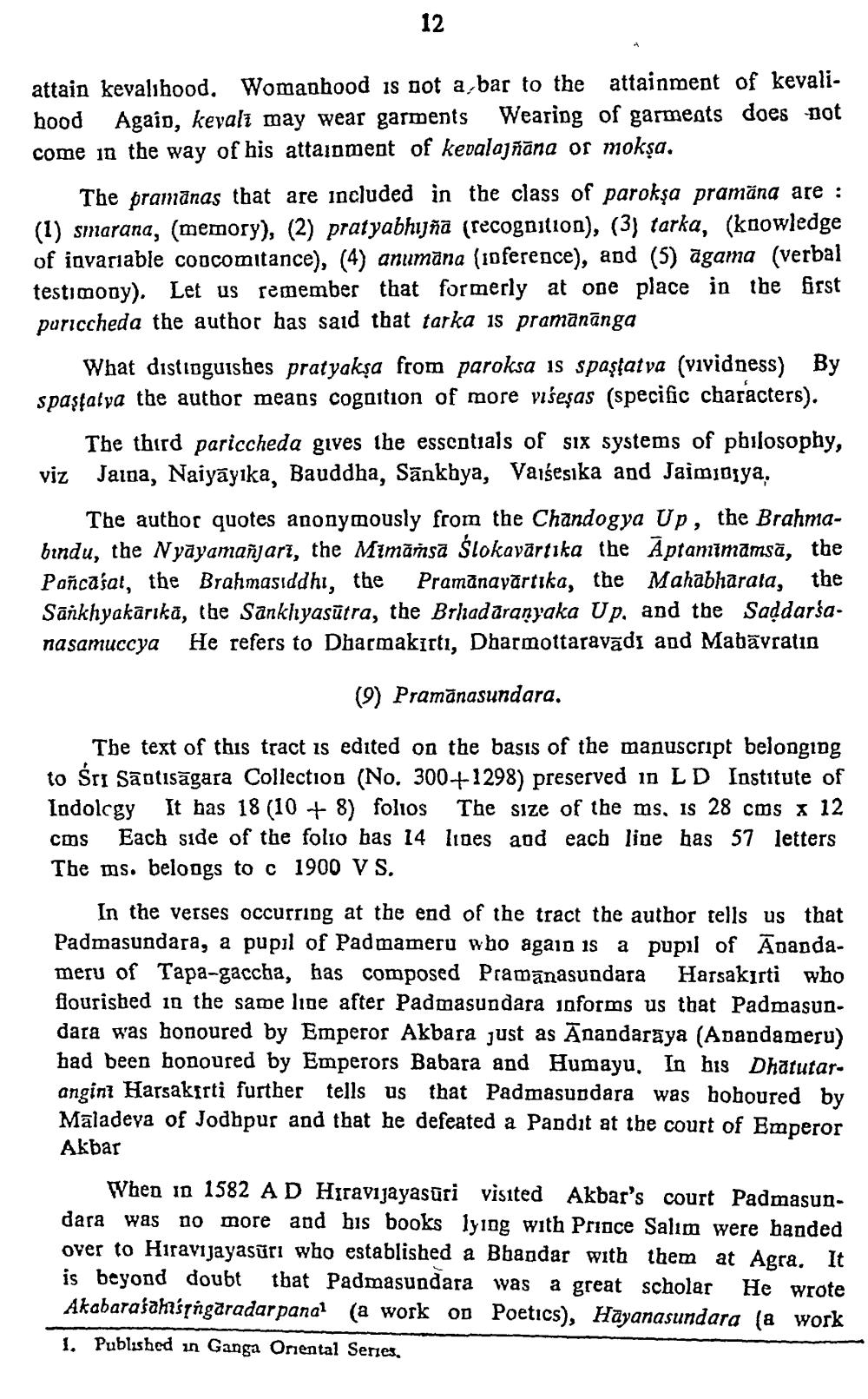________________
12
attain kevalihood. Womanhood is not a, bar to the attainment of kevali. hood Again, kevali may wear garments Wearing of garments does not come in the way of his attainment of kevalajñāna or mokşa.
The pramānas that are included in the class of parokşa pramana are : (1) smarana, (memory), (2) pratyabhijña (recognition), (3) tarka, (knowledge of invariable concomitance), (4) anumana (10ference), and (5) agama (verbal testimony). Let us remember that formerly at one place in the first puriccheda the author has said that tarka is pramanānga
What distinguishes pratyakşa from paroksa is spaştatva (vividness) By spastatya the author means cognition of more višeşas (specific characters).
The third pariccheda gives the essentials of six systems of philosophy, viz Jaina, Naiyāyika, Bauddha, Sankhya, Vaiśesika and Jaimidiya,
The author quotes anonymously from the Chandogya Up, the Brahmabindu, the Nyāyamañjari, the Mimāñsa Slokavārtika the Aptamimamsā, the Poñcasat, the Brahmasıddhi, the Pramanayārtika, the Mahabharata, the Sankhyakarikā, the Sankhyasūtra, the Brladaranyaka Up, and the Saddarsanasamuccya He refers to Dharmakirti, Dharmottaravādı and Mabāvratio
(9) Pramānasundara.
The text of this tract is edited on the basis of the manuscript belonging to Śri Saotisāgara Collection (No. 300+1298) preserved in LD Institute of Indolcgy It has 18 (10 + 8) folios The size of the ms, is 28 cms x 12 cms Each side of the folio has 14 lines and each line has 57 letters The ms. belongs to c 1900 VS.
In the verses occurring at the end of the tract the author tells us that Padmasundara, a pupil of Padmameru who again is a pupil of Anandameru of Tapa-gaccha, has composed Pramānasundara Harsakırti who flourished in the same line after Padmasundara informs us that Padmasun. dara was honoured by Emperor Akbara just as Anandaraya (Adandameru) had been honoured by Emperors Babara and Humayu. In his Dhatutar. angint Harsakirti further tells us that Padmasuodara was hoboured by Maladeya of Jodhpur and that he defeated a Pandit at the court of Emperor Akbar
When in 1582 A D Hitavijayasūri visited Akbar's court Padmasun. dara was no more and his books lying with Prince Salim were handed over to Hiravijayasūri who established a Bhandar with them at Agra. It is beyond doubt that Padmasundara was a great scholar He wrote Akabarajahsrngaradar panal (a work on Poetics), Hayanasundara (a work 1. Published in Ganga Oriental Series,




